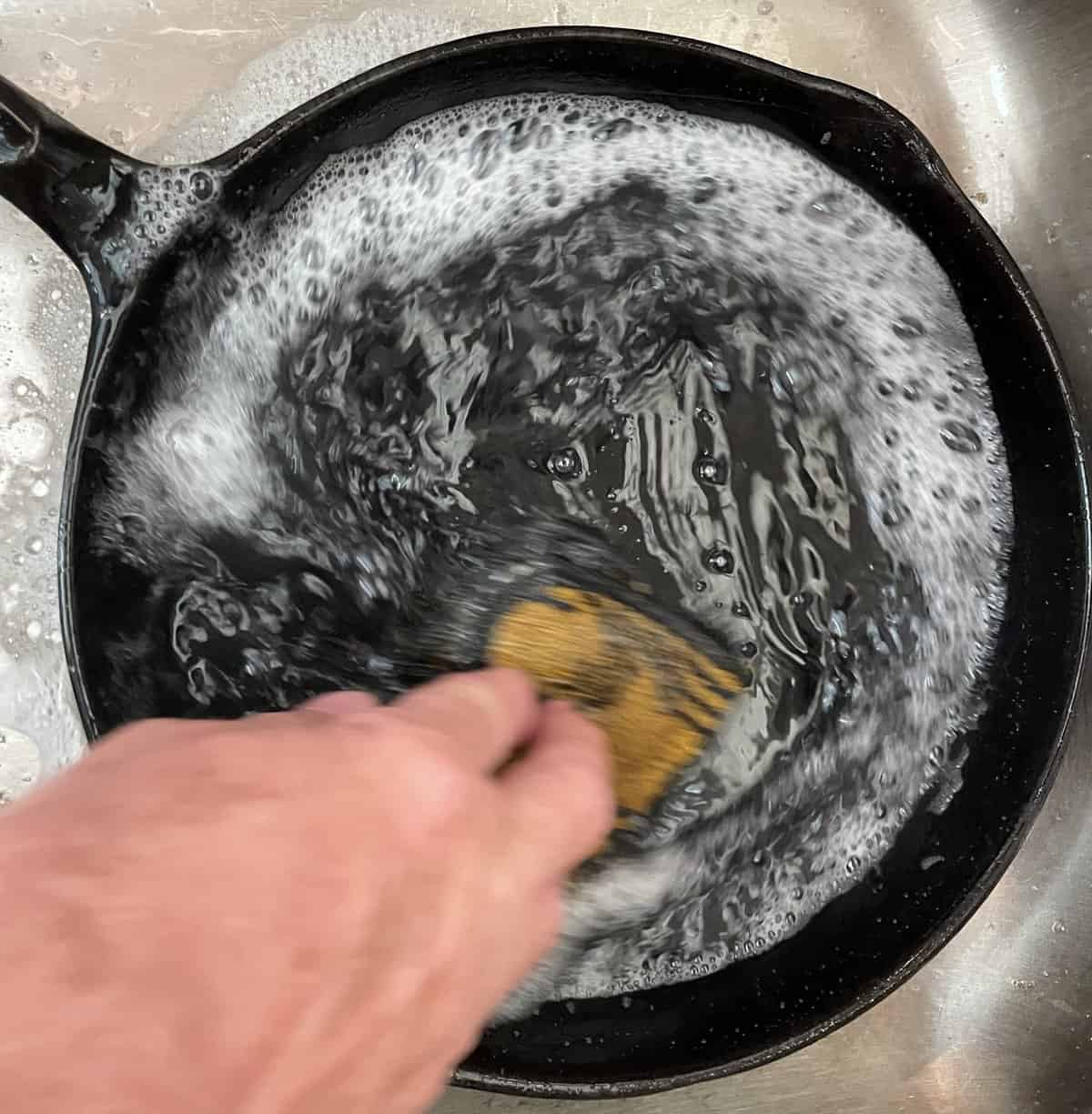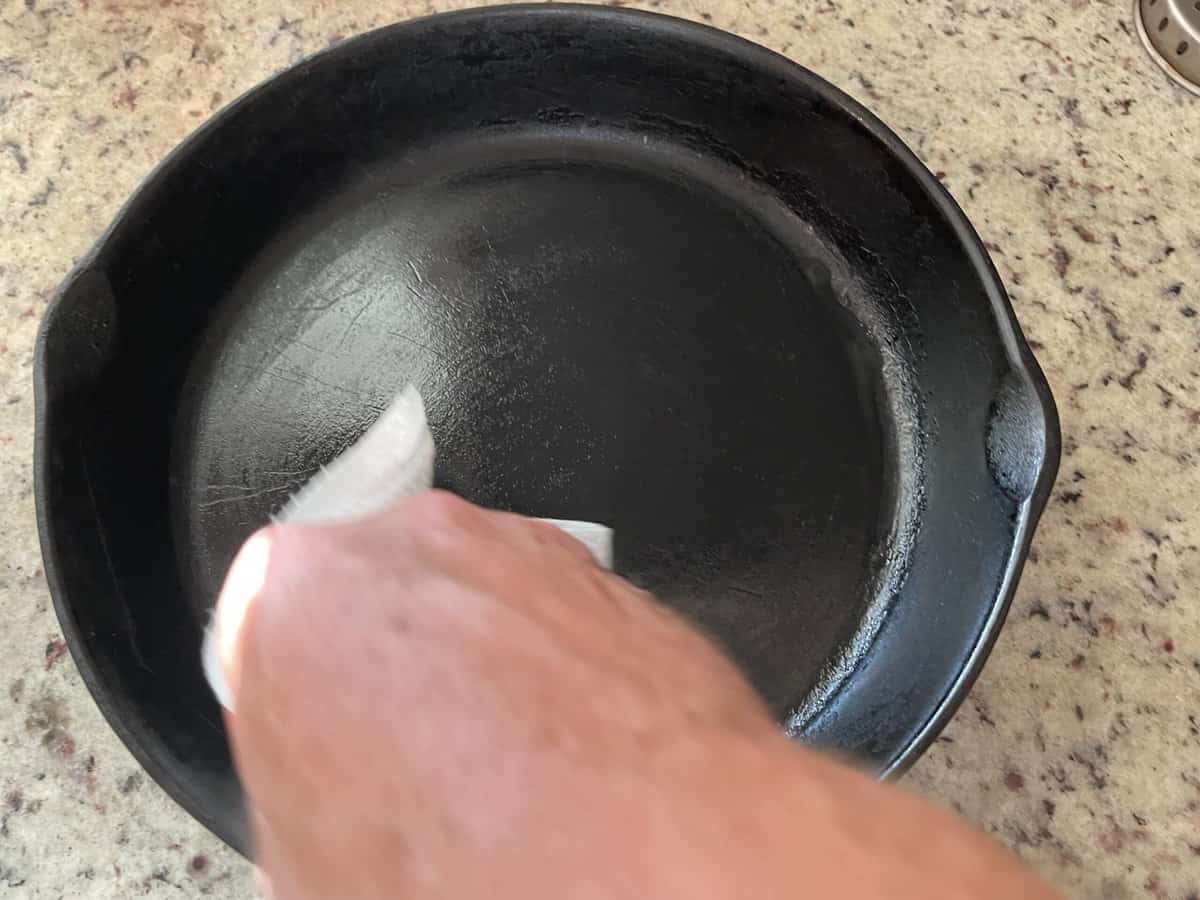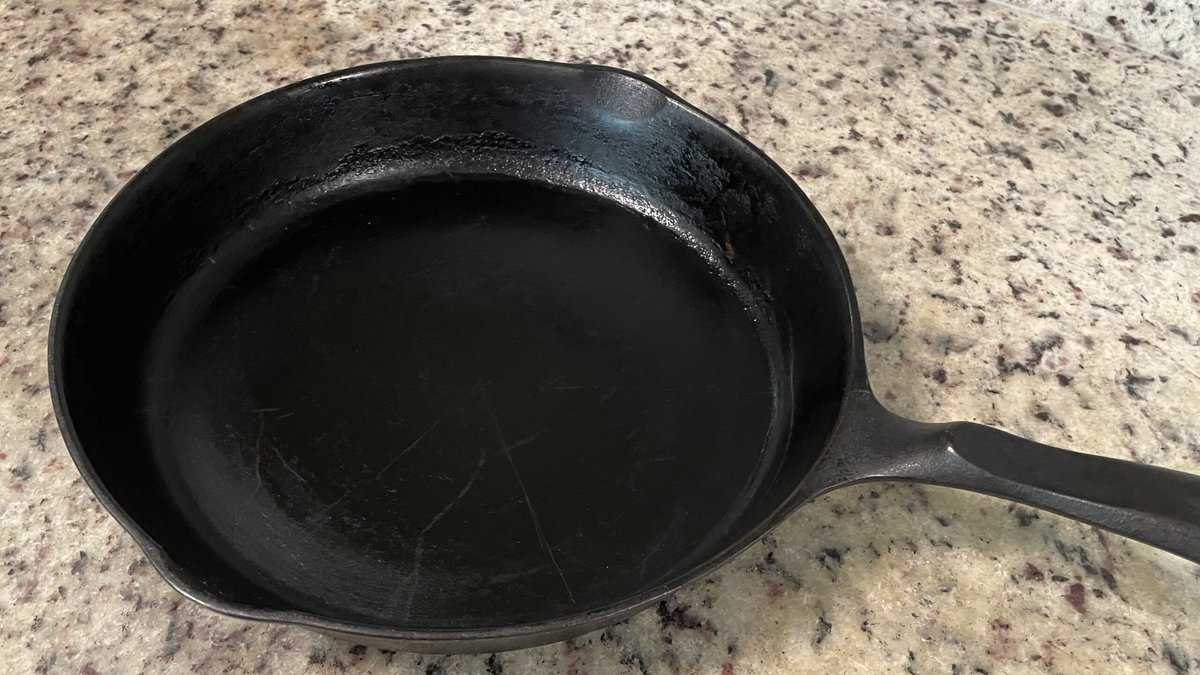Author’s note: We do not have any relationship with Lodge, or any other food or equipment product manufacturer for that matter. There were just too many people arguing out there about something that only a legendary manufacturer can authoritatively address. Like the Great Soap War.
You haven’t lived until you’ve (a) cooked with cast iron cookware and (b) read the fevered pitch of blog experts fighting each other over how to clean your cast iron. 🍳
We’ve got every level of scientist and kitchen warrior and manufacturer and celeb chef involved in this global showdown. On one side are purists who say no to soap, on the other the purifying soapers. Battle lines are drawn and no one’s giving in until the United Nations decides.
Hey everyone, let there be peace! It’s just cast iron! Seriously. You use it, you clean it, you store it, you use it again. Stuff sticks on and stuff comes off. Cast iron is tough, and honestly it laughs at all this talk about whether it will be hurt. It truly lasts forever, maybe long after global warming wins, in which case it would just be another hot cast iron skillet.
So let’s just go over the basics here. We’ve already taken a spin through the absolute Disney World of cast iron, which is Lodge Cast Iron, the last bastion of mass production of this indoor and outdoor cooking necessity in South Pittsburg, Tenn. Now it’s time to clean up their stuff, and you’re going to be amazed at how few steps it takes to finish.

What You Need To Know First About Cleaning Cast Iron
There are just three known truths in the world of cast iron cleaning, and this is a fact: Wash, dry and oil. That’s it. Done! We’re going to keep typing here anyway because everyone else does, and there probably are going to be some things you didn’t know so please keep reading.
First of all, we didn’t just buy a bunch of Lodge stuff and come home and make killer meals on the Large Big Green Egg. No, we also hung around there and talked to some folks. These are foundry workers who literally live in a cast iron world, complete with the World’s Largest Cast Iron Skillet and the National Cornbread Festival using cast iron cookware. Their legacy goes back to 1877 when Joseph Lodge moved to town during the steel and pig-iron heyday, setting up shop and leading to this. Others shut down, but Lodge people do cast iron the way people in Alaska do Fat Bear Week and Martha’s Vineyard does Shark Week. It’s what they do.
No offense to Food Network and The New York Times and everyone else out there who has wasted precious time with serious research into how to clean cast iron, but I’m gonna take the word of the people who have made this stuff for over a century and also clean it for a living. Not the Mom who just cleaned up after Shakshuka, either. You want the straight truth about your health, you go to a good doctor and dentist. You want to know how to clean cast iron, you go to the people who forge it in fire and trust you with its usage. This matters.
So before we get into the steps, let’s just put it out there: IT’S OK TO USE SOAP. Because Lodge Cast Iron said it’s perfectly fine if needed. Myth busted. UN decided. Time to move on. You also need to know that a cast iron piece improves with age, but that it also is porous as a fired object from natural ore and mixtures, therefore subject to damaging rust and abuse. Upkeep is so minimal in the big picture, you don’t want to mess up the cleaning part.
What You’ll Need To Clean Your Cast Iron
You need four or five things, basically, and you might not need all those. Grab your paper towels, scrubber, scraper and canola oil. Dishwashing liquid is already right there by the sink if needed. To make things easier, you might even want to go for a whole care kit from Lodge ($25). Now that you have these items to go along with a freshly soiled cast-iron skillet and full belly, you are ready to enter the zen universe of cleaning cast oil cookware.
Because it’s so zen, we are going to start by chanting the most frequently recited Tibetan mantra, toward the end of the Heart sutra: Aum…gate gate paragate parasamgate. It means “Gone, gone, gone beyond, gone completely beyond.” That’s what is about to happen once you start following our steps! You probably just splurged into Ayurveda history by cooking with ancient spices and superfoods like turmeric, cumin, black pepper, ginger, coriander, cinnamon, honey and more, so you might as well add balance into your life as you proceed with cleaning up that good food.

Step 1: Wash Your Cast Iron
After scooping out all the contents, put the pan in your sink and start the cleaning process then and there. It won’t take long and you’ll join the hungry crew in a couple moments. Stuck-on remnants harden as the skillet cools, so put the pan under hot water (careful with the hot handle) and use a scrubber to remove all food. I prefer an everyday scrub cloth from Lodge that is safe for all cast iron or enameled cast iron, but I keep a standard scrub brush handy. Use a little dishwashing soap if you prefer, as it helps speed the process. Naysayers contend that soap strips seasoning from a pan, but the people who make and season the pan say that is false, so there. Never use a dishwasher, which would remove seasoning and cause rust.
For really stuck-on food, bring in the scraper! I recommend a polycarbonate type with a silicone comfort grip, like this one that works for smooth or ridged cooking surfaces. You can use a metal or wood scraper if you wish, but never scrub with steel wool or a metal scrubber. I also bought a chain mail scrubber at Lodge, but the tag is still on it because I have honestly never even had to reach the scraping stage yet. (Knocks on cast iron.) Some people use Kosher salt and a dry towel. You can also try boiling some water in the pan if it’s still a problem (it shouldn’t be), but one thing to avoid is ever soaking a C.I. skillet and leaving it to rust.
Step 2: Dry Your Cast Iron
Dry thoroughly and promptly with a paper towel or a lint-free cloth. If you want to make sure it’s completely dry, just put it on the stove and heat gently until water evaporates. (The downside there is that it adds more time to this three-step process — impractical and not really necessary if you are actually waiting to join others at the dinner table.) Any black residue on your towel is perfectly normal as it is just seasoning from the CI skillet.

Step 3: Oil Your Cast Iron
Seasoning is the term used for a layer of carbonized oil that was baked onto your cast iron pan, at least if it came from Lodge. It provides that easy-release finish that makes cooking so easy and memorable, gradually increasing that layer. Lodge incorporates the seasoning into your pan at the end of the manufacturing process, so you don’t have to worry about it. Earlier and other manufacturers did not do this, so anyone with a legacy skillet like that has to do an initial seasoning themselves, baking oil into the skillet or lid.
Once a cast iron baking product has been seasoned, you just need to maintain it by adding a very thin layer of oil after it has dried. Just a few drops of neutral cooking oil like canola, vegetable or grapeseed is all you need. Use your paper towel to rub it all over the surface, until no oil residue remains. I purchased a bottle of Lodge’s aerosol Seasoning Spray (canola oil) to enhance the finish, but after doing this several times and wiping it all over the surface, I’ll return to just using a regular bottle of cooking oil in the future as spray needs wiped in anyway.
Now that your cast iron cook ware is clean, there is just the matter of storing it properly so you prevent rust and scratching. Take another paper towel and simply place it inside your pan. Whenever you wash other pots and pans, they might have extra moisture on them, and you don’t want them to drip onto your cast iron. Lodge skillets have the trademark teardrop handle design, so they can also hang artistically overhead in your kitchen if you have strong hooks.
How to Remove Rust and Re-Season
Sometimes it happens in a busy life: a cast iron skillet rusts. If it happens to you, don’t cry but it’s OK to S-O-B. That’s the three-step acronym to follow: Scrub, Oil, Bake.
Scour it with warm, soapy water and also steel wool or course salt. Use as much soap as you want, because you’re going to want to re-season the pan. Thoroughly rinse and hand dry.
Apply a thin and even layer of cooking oil, inside and out. Not too much or the pan may get sticky.
Now it’s time to re-season. Put your cookware upside-down on the top rack of your oven. Place aluminum foil or a large baking sheet on the lower rack to catch excess oil that might drip off. Bake at 450-500 degrees for one hour, then allow it to cool. Repeat as needed so you get that classic black patina that makes cast iron so cool.

If you have a cast iron pan, it’s going to probably outlast you and all you have to do is remember that it’s as easy as 1-2-3 to clean it and be ready for the next skillet cornbread or seared ribeye.

